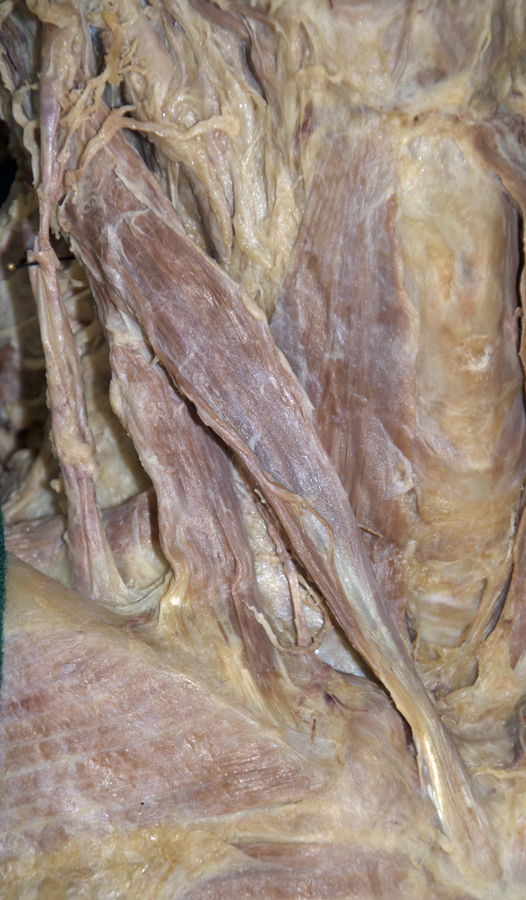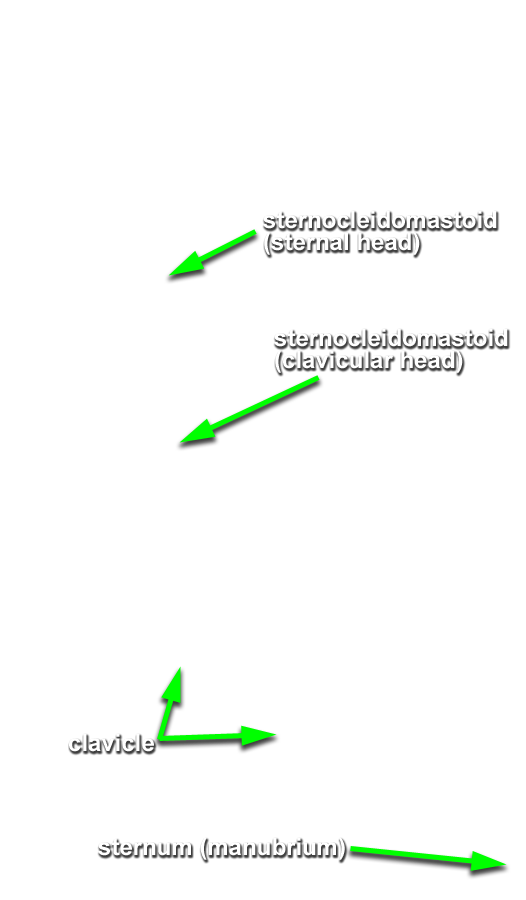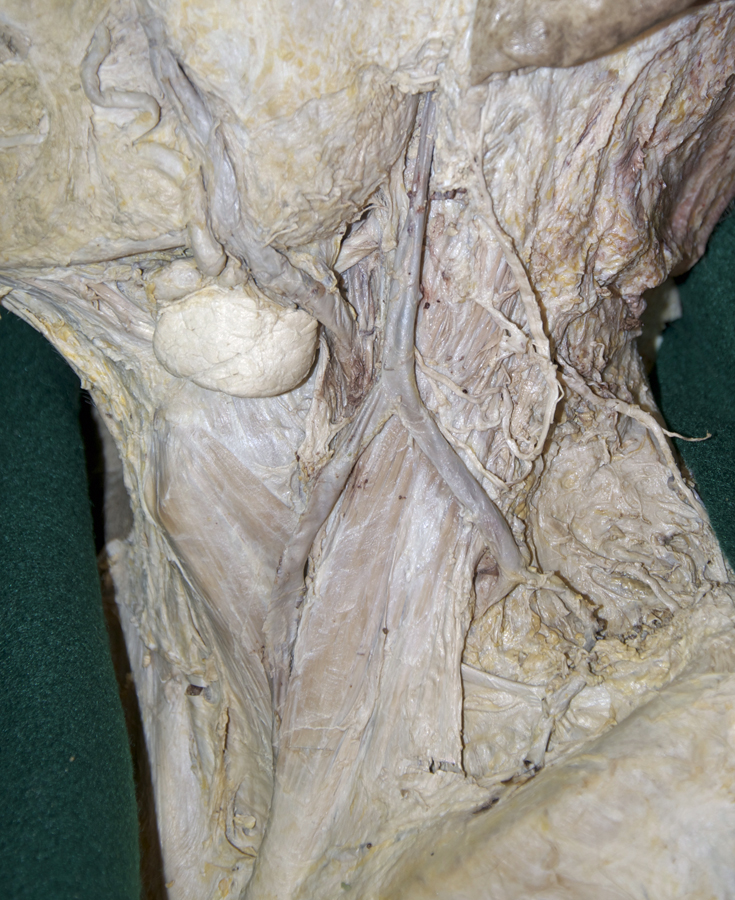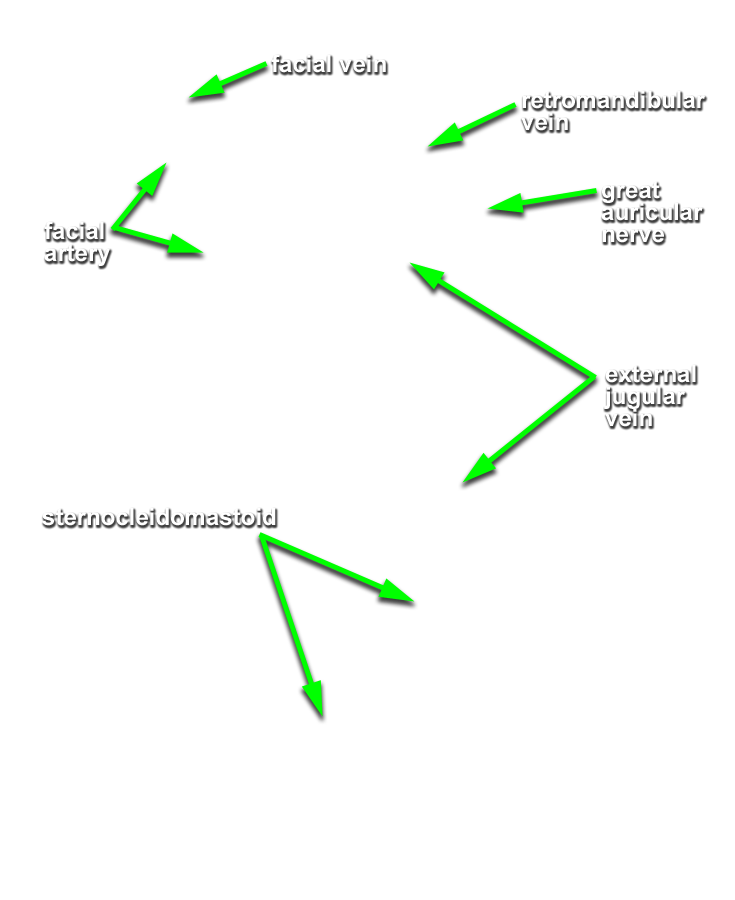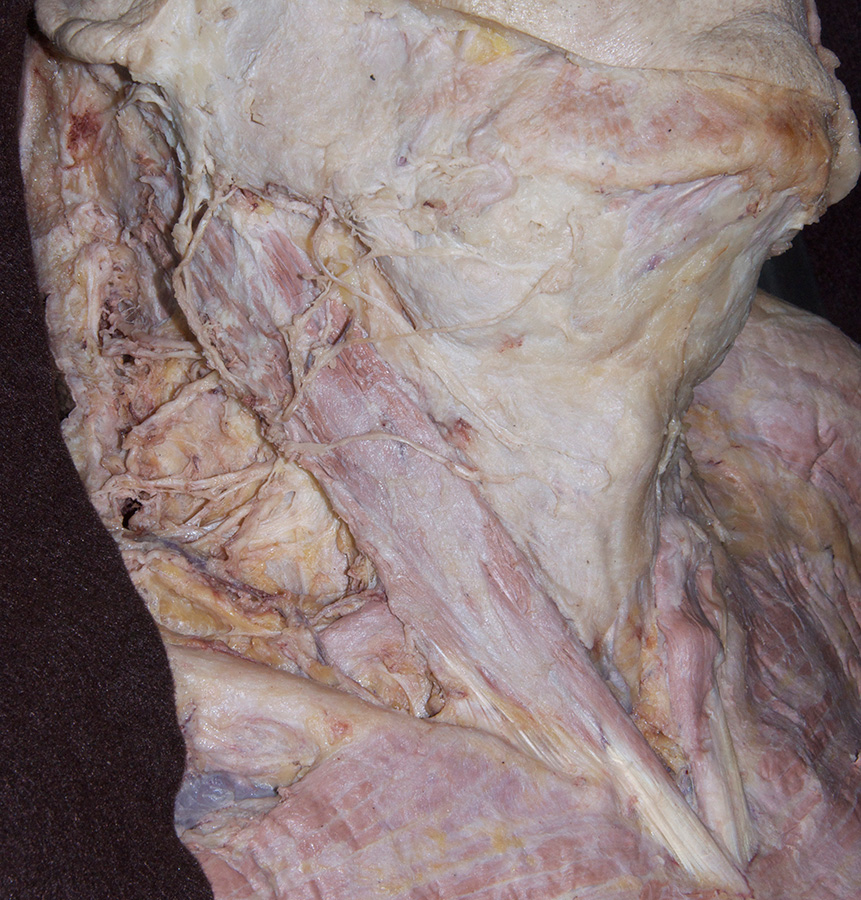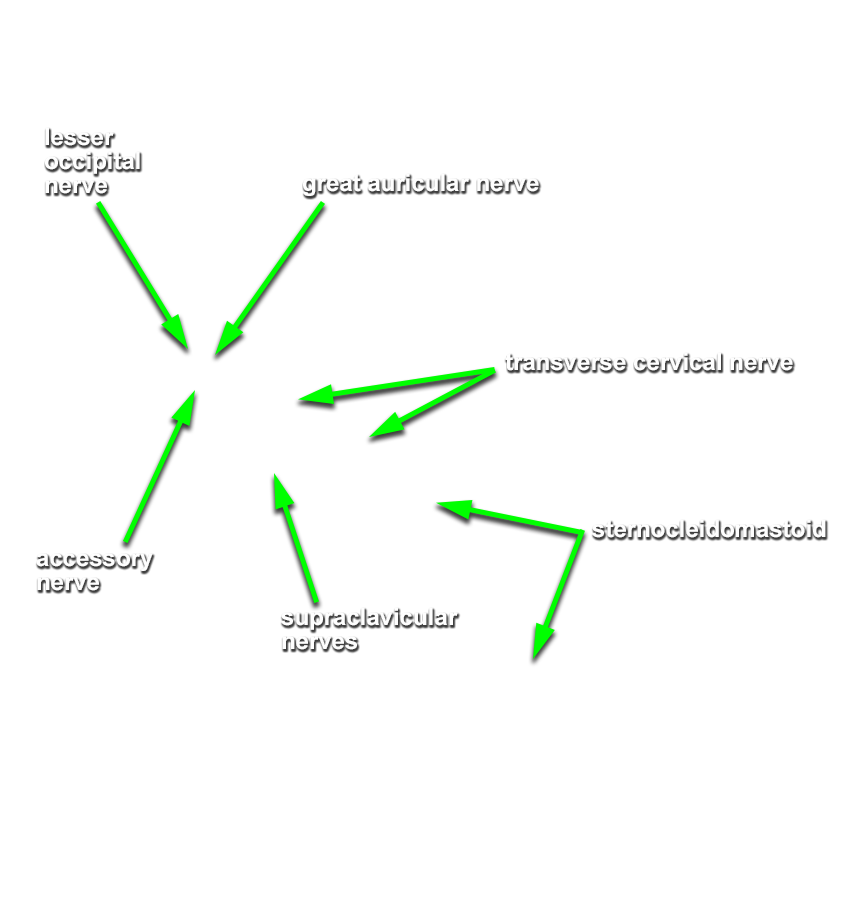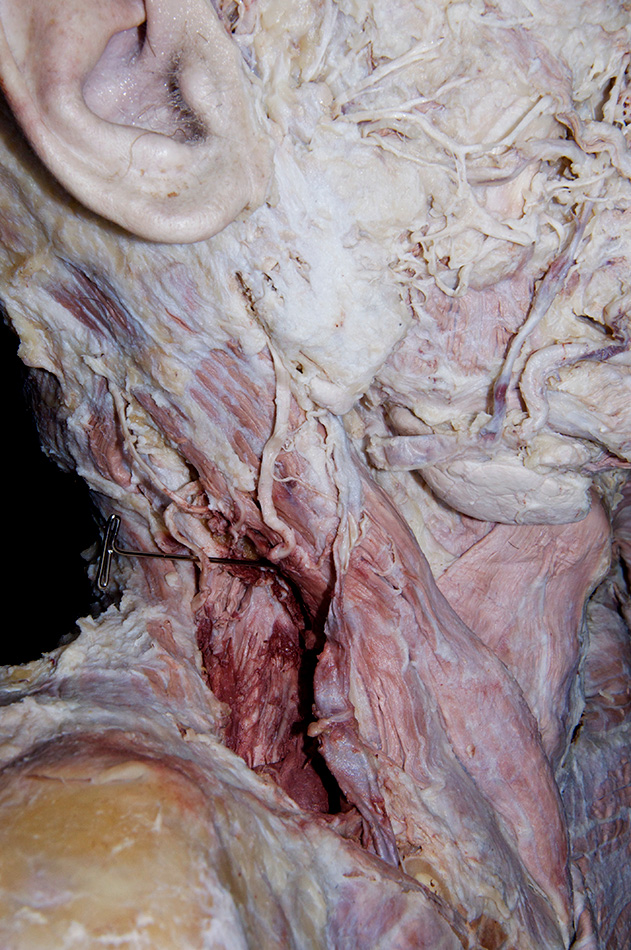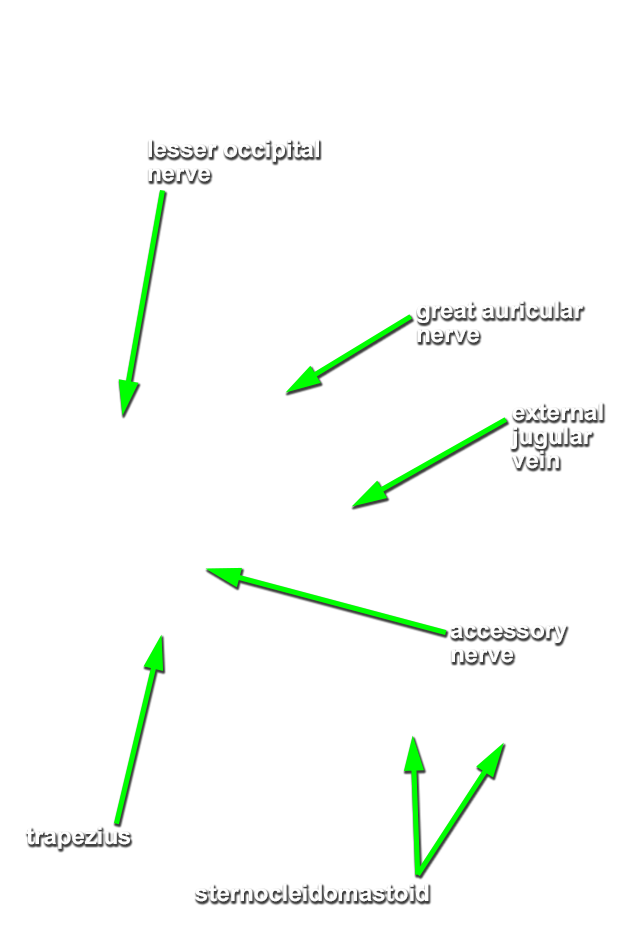(ON BOTH SIDES) Identify the sternocleidomastoid muscle. (G 8.5A;N 26;Gl 39.32)
- Identify the
sternocleidomastoid muscle and
external jugular vein crossing superficial to the SCM. (G 8.5A;N 30;Gl 39.32)
Important Relationships
- The sternocleidomastoid muscle is positioned superficial to both the omohyoid muscle and the carotid sheath.
- The external jugular vein passes lateral (superficial) to the sternocleidomastoid muscle.
- Identify the
great auricular nerve adjacent to the external jugular vein. Attempt to identify the other cutaneous branches of the cervical plexus
(
supraclavicular, transverse cervical and lesser occipital) emerging from the posterior border of the SCM. (G 8.5A;N 2 & 30;Gl 39.32B)
Important Relationships
- The great auricular and transverse cervical nerves pass posterior and lateral (superficial) to the sternocleidomastoid muscle.
- The lesser occipital nerve passes posterior to the sternocleidomastoid muscle.
- Identify the
accessory nerve emerging from deep to the sternocleidomastoid at the same approximate level as the great auricular and lesser occipital nerves. (G 8.5A;N 31;Gl 39.32C) Trace this nerve from the posterior border of the SCM to the anterior border of the trapezius muscle.
Important Relationship
- The accessory nerve passes medial (deep) and then posterior to the sternocleidomastoid muscle.
